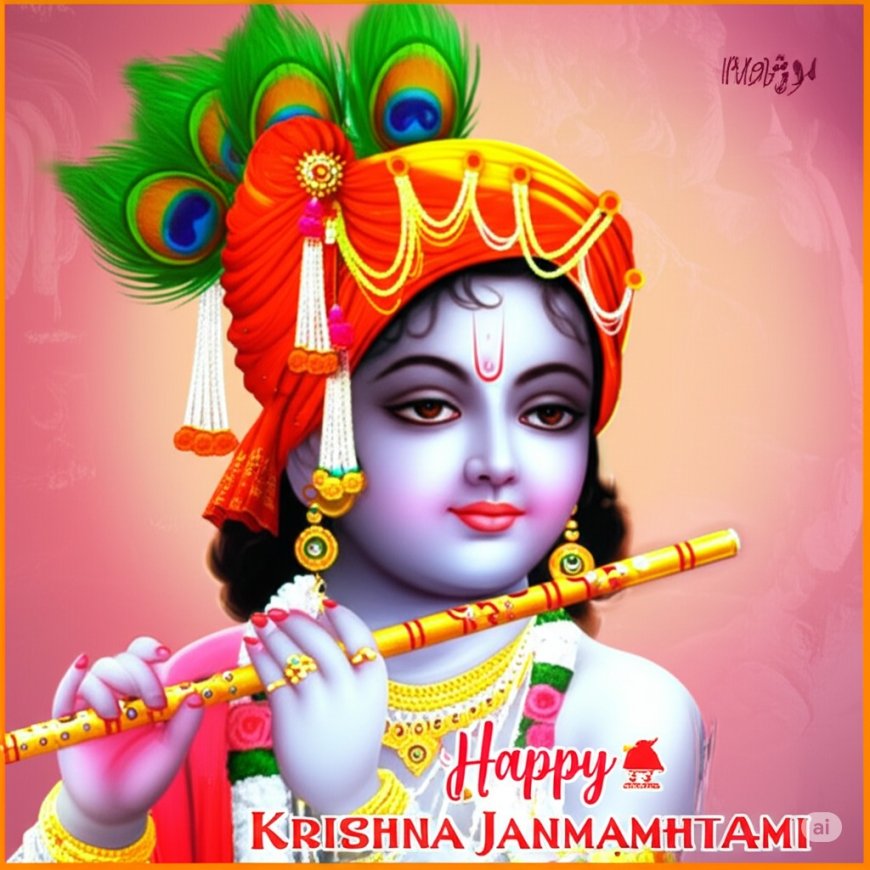Celebrating Krishna Janmashtami 2025: Devotion and Diversity
Celebrate Krishna Janmashtami 2025 with devotion, unity, and cultural diversity, honoring Lord Krishna’s birth, teachings, and divine legacy.

Introduction
Krishna Janmashtami is one of the most vibrant and widely celebrated festivals in India and across the globe. It marks the birth of Lord Krishna, the eighth incarnation of Lord Vishnu, who is revered as the divine protector, philosopher, and guide. In 2025, Janmashtami will be celebrated with great devotion and enthusiasm, uniting millions of devotees in faith and festivity.
History and Origins
According to Hindu mythology, Lord Krishna was born over 5,000 years ago in Mathura to Devaki and Vasudeva. His birth was no ordinary event—it was divine. At that time, Mathura was under the tyranny of King Kansa, who was foretold that Devaki’s eighth child would be his destroyer. To protect Krishna, Vasudeva carried the newborn across the Yamuna River to Gokul, where he was raised in secrecy by Nanda and Yashoda.
This story is not just about the birth of a child but symbolizes the triumph of good over evil, hope over despair, and dharma over adharma.
Why Krishna Janmashtami is Celebrated
Krishna Janmashtami is observed to honor the birth of Lord Krishna, who played a pivotal role in shaping Indian culture, philosophy, and spirituality. His teachings in the Bhagavad Gita remain timeless, guiding humanity in moments of moral conflict. The festival is also a reminder of divine intervention to restore peace and justice.
Date of Celebration
Krishna Janmashtami is celebrated every year on the eighth day (Ashtami) of Krishna Paksha in the month of Bhadrapada, according to the Hindu lunar calendar. In 2025, the festival will fall on August 15th–16th (depending on the tithi timings). Devotees observe fasting, sing devotional songs, and gather at temples to witness Krishna Leela and Jhanki performances.
Key Stories and Incidents
-
Birth of Krishna – Symbolizing divine protection against evil forces.
-
Makhan Chor (Butter Thief) – Krishna’s playful childhood, stealing butter, symbolizes innocence and joy.
-
Govardhan Hill Lifting – Krishna lifted the Govardhan Hill to protect villagers from Indra’s wrath, showing his power and care for devotees.
-
Teachings of the Gita – Krishna’s guidance to Arjuna in the Mahabharata remains one of the most important spiritual discourses in human history.
Significance of the Festival
-
Represents victory of good over evil.
-
Inspires moral values and spiritual growth.
-
Strengthens family and community bonding through rituals and celebrations.
-
Promotes Indian art, music, dance, and cultural diversity.
Advantages
-
Encourages devotion, self-discipline, and fasting practices.
-
Brings communities together through cultural activities like Dahi Handi.
-
Revives ancient traditions and values for younger generations.
Disadvantages
-
Overcrowding at temples can cause mismanagement and safety risks.
-
Excessive spending and commercialization may overshadow the spiritual essence.
-
Noise and environmental issues during celebrations in urban areas.
Final Thoughts and Conclusion
Krishna Janmashtami 2025 is more than a religious festival—it is a celebration of divine love, truth, and universal harmony. While rituals, fasting, and festivities hold their importance, the real significance lies in imbibing Krishna’s teachings in daily life—living with righteousness, spreading joy, and overcoming challenges with faith and wisdom.
As we celebrate this Janmashtami, let us not just remember Krishna’s stories but also apply his timeless wisdom to lead a life of balance, compassion, and devotion.

 Ellofacts
Ellofacts 





